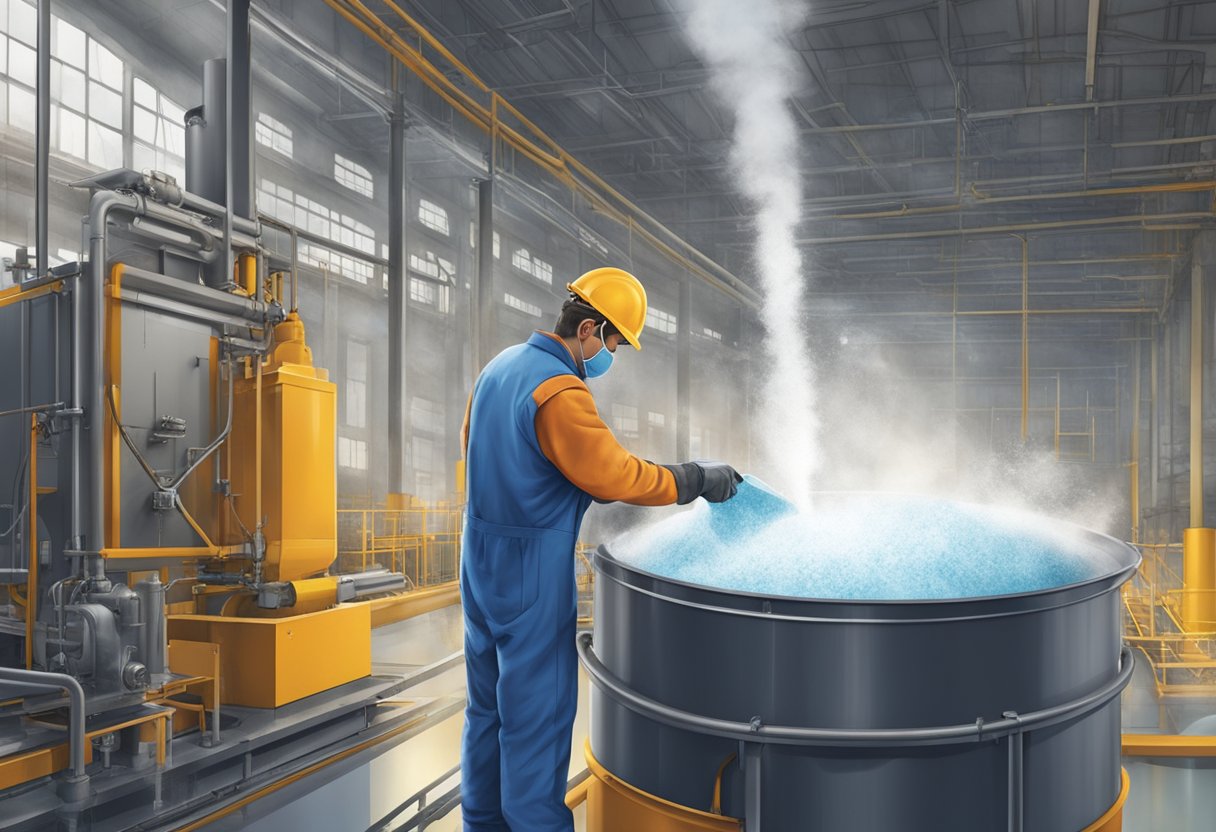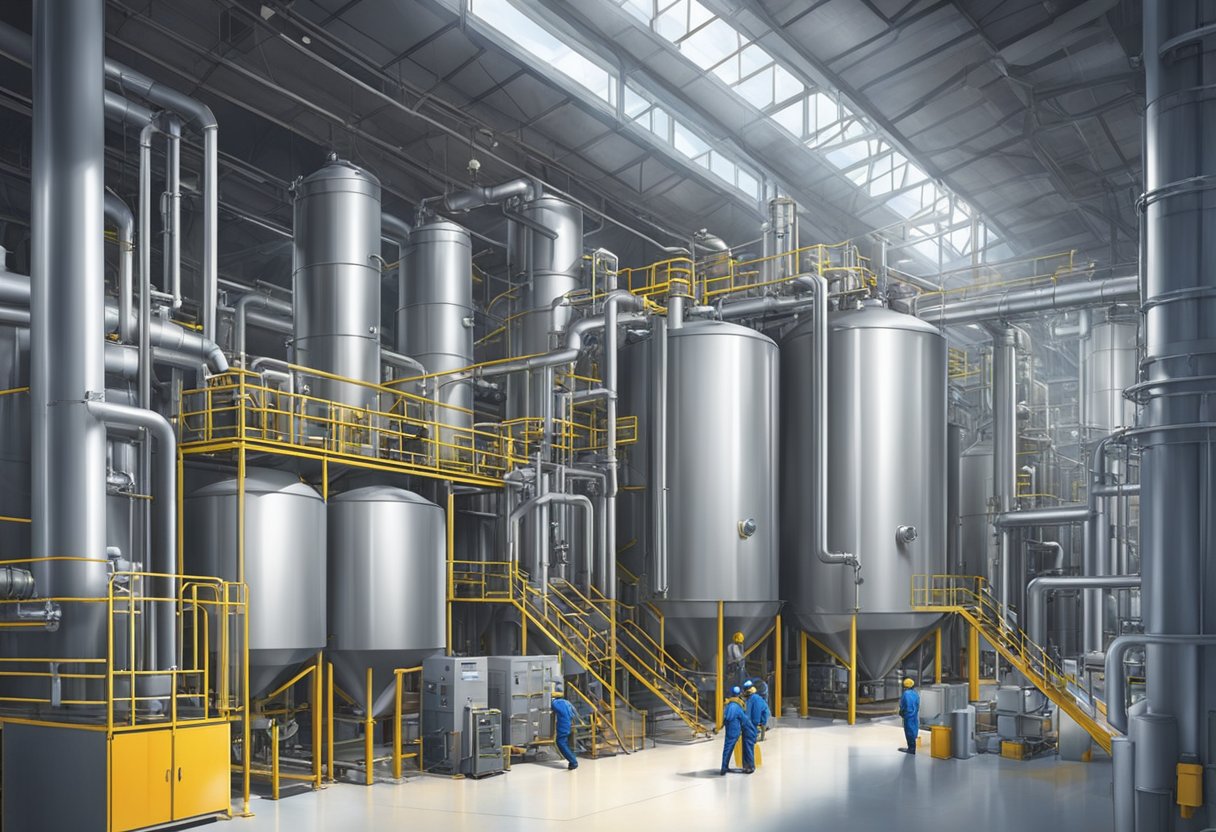Hydrogenated Petroleum Resin: Properties and Applications
20/01/2024
Hydrogenated petroleum resin is a type of synthetic resin that is commonly used in various industrial applications. It is a thermoplastic material that is derived from petroleum or natural gas. The hydrogenation process involves adding hydrogen to the resin to make it more stable and resistant to oxidation.

Hydrogenated petroleum resin has a wide range of applications in industries such as adhesives, coatings, printing inks, and rubber. It is used as a tackifier in adhesives to improve the adhesive properties of the product. In coatings, it is used as a binder to improve the durability and weather resistance of the coating. In printing inks, it is used as a pigment dispersant to improve the color stability and viscosity of the ink. In rubber, it is used as a reinforcing agent to improve the strength and elasticity of the material.
Overall, hydrogenated petroleum resin is a versatile material that plays an important role in various industrial applications. Its unique properties make it an ideal choice for a wide range of products, and its widespread use is a testament to its effectiveness and reliability.
Chemical Composition of Hydrogenated Petroleum Resin

Hydrogenated petroleum resin is a synthetic resin that is derived from petroleum. It is a thermoplastic resin that is produced by the hydrogenation of petroleum-based feedstocks. The chemical composition of hydrogenated petroleum resin varies depending on the source of the feedstock and the degree of hydrogenation.
The main components of hydrogenated petroleum resin are aliphatic and aromatic hydrocarbons. The aliphatic hydrocarbons are typically derived from petroleum fractions such as naphtha and gas oil, while the aromatic hydrocarbons are derived from heavy aromatic oils such as coal tar and shale oil.
The degree of hydrogenation of the resin is an important factor in determining its properties. Highly hydrogenated resins are typically harder and more brittle, while less hydrogenated resins are softer and more flexible.
Hydrogenated petroleum resin is typically produced by a catalytic hydrogenation process. The feedstock is mixed with a catalyst and hydrogen gas, and the mixture is heated under pressure. The hydrogen gas reacts with the unsaturated bonds in the feedstock, resulting in the hydrogenation of the resin.
In conclusion, hydrogenated petroleum resin is a synthetic resin that is derived from petroleum and is produced by the hydrogenation of petroleum-based feedstocks. Its chemical composition varies depending on the source of the feedstock and the degree of hydrogenation.
Manufacturing Process

Hydrogenated petroleum resin is a thermoplastic resin produced by hydrogenation of petroleum-based resin. The manufacturing process involves the following steps:
- Polymerization: The first step is the polymerization of petroleum-based feedstock. This is done by heating the feedstock to a high temperature in the presence of a catalyst. The resulting polymer is a viscous liquid that is cooled and solidified.
- Hydrogenation: The next step is hydrogenation, which involves the addition of hydrogen gas to the polymer. This process is done at high pressure and temperature in the presence of a catalyst. The hydrogenation process reduces the number of double bonds in the polymer, making it more stable and less reactive.
- Distillation: The hydrogenated polymer is then purified by distillation. This process involves heating the polymer to a high temperature and collecting the fractions that boil off at specific temperatures. The resulting product is a clear, colorless resin that is solid at room temperature.
The manufacturing process for hydrogenated petroleum resin is a complex and precise process that requires strict quality control measures to ensure consistent product quality. The resulting resin is widely used in the adhesive, coating, and rubber industries due to its excellent adhesion, thermal stability, and chemical resistance properties.
Properties and Characteristics

Physical Properties
Hydrogenated petroleum resin is a thermoplastic resin that is derived from petroleum feedstocks. It is a colorless or pale yellow solid with a low molecular weight and a softening point that typically ranges from 90 to 140 °C. This resin is soluble in aliphatic and aromatic solvents, but insoluble in water.
Hydrogenated petroleum resin has a low viscosity and is relatively easy to process. It can be molded, extruded, and cast into various shapes and forms. This resin has good adhesion properties and can be used as a binder for various applications.
Chemical Stability
Hydrogenated petroleum resin is a highly stable material that is resistant to oxidation and thermal degradation. It is also resistant to acids, alkalis, and other chemicals. This resin has good weatherability and can withstand exposure to UV radiation and other environmental factors.
Hydrogenated petroleum resin is compatible with a wide range of polymers, including polyethylene, polypropylene, and polystyrene. It can be used as a tackifier, plasticizer, and modifier for these polymers, improving their properties and performance.
Overall, hydrogenated petroleum resin is a versatile material that offers a range of properties and characteristics that make it suitable for various applications. Its physical properties and chemical stability make it an ideal choice for use in adhesives, coatings, and other industrial applications.
Applications

Adhesive Industry
Hydrogenated petroleum resin is widely used as a tackifier in the adhesive industry. It is added to adhesives to improve their bonding properties, increase their viscosity and enhance their thermal stability. The resin is compatible with a wide range of polymers, including natural rubber, SBR, and polyurethane. It is also used to produce pressure-sensitive adhesives for tapes, labels, and decals.
Printing Inks
Hydrogenated petroleum resin is a key ingredient in the production of printing inks. It is used as a binder to hold the pigment particles together and improve their adhesion to the substrate. The resin also enhances the gloss, hardness, and durability of the ink film. It is compatible with a variety of solvents and can be used in both water-based and solvent-based inks.
Rubber Compounding
Hydrogenated petroleum resin is commonly used in the rubber compounding industry. It is added to rubber compounds to improve their processing properties, increase their tackiness, and enhance their adhesion to various substrates. The resin is also used to improve the aging resistance and heat stability of rubber products. It is compatible with a wide range of rubbers, including natural rubber, SBR, and NBR.
Overall, hydrogenated petroleum resin is a versatile and valuable material with a wide range of applications in various industries. Its unique properties make it an essential component of many products, including adhesives, printing inks, and rubber compounds.
Environmental Impact and Safety
Toxicology
Hydrogenated petroleum resin is generally considered to have low toxicity. However, inhalation of its vapors can cause irritation to the respiratory system, eyes, and skin. Prolonged exposure to high concentrations of the substance may cause more serious health effects, such as lung damage.
Studies have shown that the substance does not have significant mutagenic or carcinogenic properties. However, it is important to handle the substance with care and follow proper safety protocols to avoid any potential health risks.
Regulatory Status
Hydrogenated petroleum resin is regulated by various government agencies around the world. In the United States, it is regulated by the Environmental Protection Agency (EPA) under the Toxic Substances Control Act (TSCA). The substance is also regulated by the European Chemicals Agency (ECHA) under the Registration, Evaluation, Authorization, and Restriction of Chemicals (REACH) regulation.
In general, the substance is considered safe for use in various industries, including adhesives, coatings, and inks. However, it is important to follow proper safety protocols and handle the substance with care to avoid any potential negative effects on human health and the environment.
Market Analysis
Demand Trends
Hydrogenated petroleum resin is a versatile product that is used in a variety of industries, including adhesives, coatings, and printing inks. The demand for hydrogenated petroleum resin is expected to grow steadily over the next few years due to its increasing use in various applications.
One of the major factors driving the demand for hydrogenated petroleum resin is the growth of the packaging industry. The increasing demand for packaged food, beverages, and other consumer goods is expected to drive the demand for adhesives and coatings, which in turn will drive the demand for hydrogenated petroleum resin.
Another factor contributing to the growth of the hydrogenated petroleum resin market is the increasing demand for printing inks. The growth of the printing industry, particularly in the Asia-Pacific region, is expected to drive the demand for printing inks, which in turn will drive the demand for hydrogenated petroleum resin.
Supply Chain Dynamics
The hydrogenated petroleum resin market is highly competitive, with a large number of players operating in the market. The major players in the market include Eastman Chemical Company, ExxonMobil Chemical, and Kolon Industries.
The supply chain for hydrogenated petroleum resin involves the procurement of raw materials, such as petroleum and other chemicals, and the manufacturing of the resin. The manufactured resin is then distributed to various industries for use in their products.
One of the major challenges faced by the hydrogenated petroleums resin market is the volatility of raw material prices. The prices of petroleum and other chemicals used in the manufacturing of hydrogenated petroleums resin are subject to fluctuations due to various factors, such as geopolitical tensions and supply disruptions.
In conclusion, the hydrogenated petroleums resin market is expected to grow steadily over the next few years due to its increasing use in various industries. However, the market faces challenges such as the volatility of raw material prices, which could impact the profitability of players in the market.
Future Developments
Technological Advancements
Hydrogenated petroleums resin is a versatile material that has numerous applications in various industries. As technology continues to advance, it is expected that new ways of producing and utilizing this resin will emerge. One such development is the use of nanotechnology to enhance the properties of hydrogenated petroleums resin. Researchers are exploring the use of nanoparticles to improve the resin’s adhesion, durability, and resistance to heat and chemicals.
Another technological advancement is the development of new catalysts that can improve the efficiency of the hydrogenation process. This will result in higher yields of hydrogenated petroleums resin, reducing the cost of production and making it more affordable for consumers.
Sustainable Alternatives
As the world becomes more environmentally conscious, there is a growing demand for sustainable alternatives to traditional materials. Hydrogenated petroleums resin is no exception. In response to this demand, researchers are exploring the use of renewable feedstocks such as biomass and waste materials to produce hydrogenated petroleums resin.
Another sustainable alternative is the use of bio-based resins. These resins are derived from renewable sources such as plant oils and sugars. They offer similar properties to hydrogenated petroleumS resin and are biodegradable, making them an attractive option for environmentally conscious consumers.
In conclusion, the future of hydrogenated petroleumS resin looks promising with the emergence of new technological advancements and sustainable alternatives. As the demand for this versatile material continues to grow, it is expected that more research and development will be conducted to improve its properties and reduce its environmental impact.




